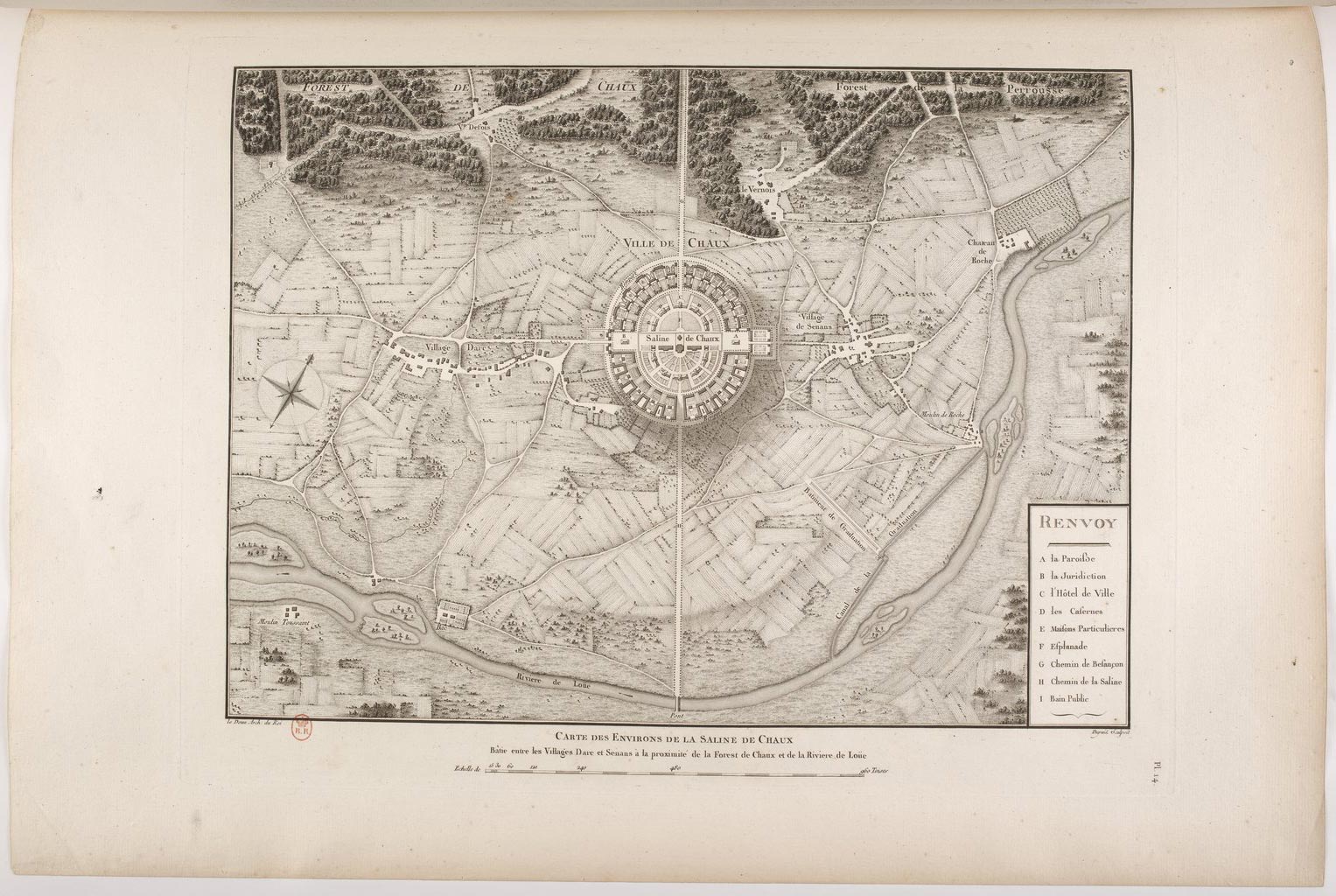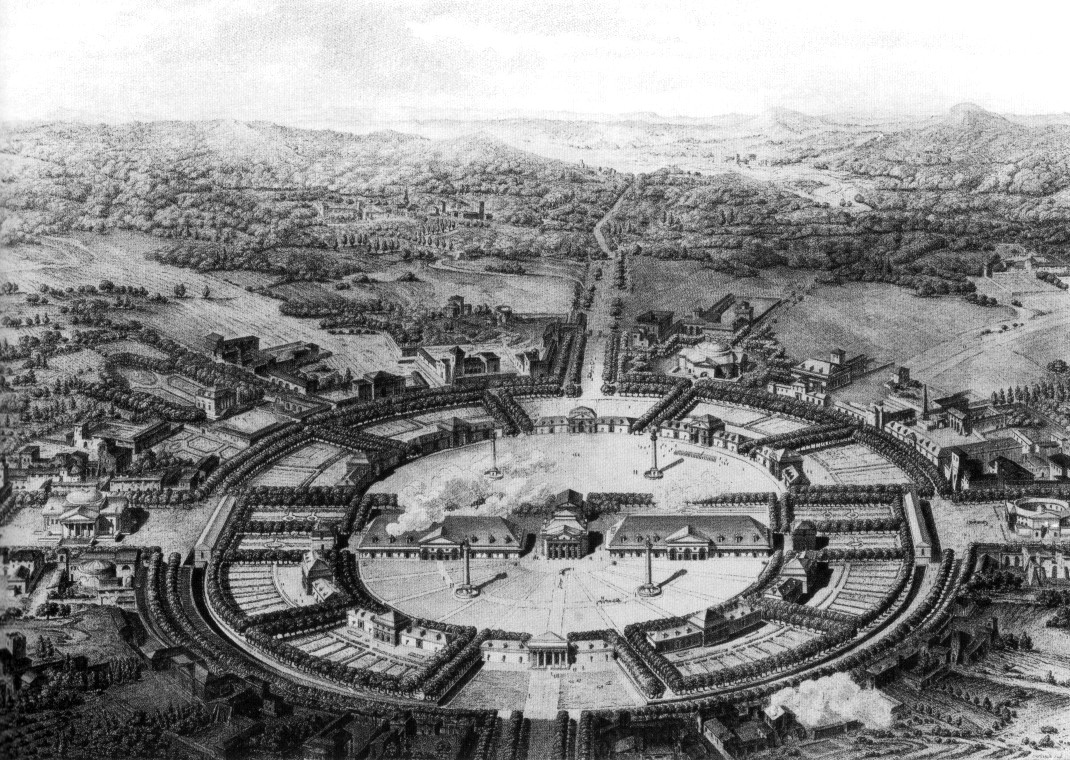Architecture and the Enlightened

Architects of Enlightenment
The enlightenment period was a very important and significant period of European architectural history.
I will focus on two important very important figures in this movement: Etienne-Louis Boullee, left (1728-1799) and Claude-Nicholas Ledoux, right (1736-1806)
A quote from Louis Kahn expresses the importance of these two gentlemen:
"Spirit in will to express can make the great sun seem small.
The sun is, thus the universe is.
Did we need Bach? Bach is, thus music is.
Did we need Boullee Did we need Ledoux
Boullee is, Ledoux is Thus architecture is."
Boullee
Boullee was born in Paris in 1728; his father was an architect and an appraiser in the service of Louis XV.
He studied painting under Jean-Baptiste Pierre and then architecture under Jacques-Francois Blondell who's work was characterised as Neo-classical.
It was during his teaching years 1778-88 at the Ecole Nationale de Ponts et Chaussees where he made his biggest impact. Here he developed a distinctive abstract geometric style inspired by classical forms.
His work was characterised by the removal of all unnecessary ornamentation and his inflation of geometric forms to a huge scale while replacing elements such as columns. An example of his style can be seen in the spiral tower he designed. Boullee's regularity, symmetry and variety were his golden rules of architecture and he used them often.
 Spiral Tower designed by Boullee
Spiral Tower designed by Boullee
Boullee began to re-establish classicism as the architecture of authority, a Neo-classical style.
Neo-classicism
Probably Boullee's most important design under his new Neo-classical style was the tomb for Sir Isaac Newton. A work of astonishing scale that recreated Newton's cosmos within a 150m sphere larger than the pyramids of Giza.


The design of this memorial creates the effect of both day and night. The night effect is created when the sarcophagus is illuminated by sunlight passing through holes in the sphere to create the illusion of thousands of stars in the night sky. The day effect is produced by an armillary sphere hanging in the centre of the sarcophagus that would glow to create the effect of the sun. Boullee had designed a building that depending on the use of light, changes its atmosphere and appearance.
Boullee although considered quite extreme with his designs, was also know for applying rationalised thought to design and created the idea of Neo-rationatlism within architecture.
Boullee is so significant because he established two style of architecture; one is considered impressive in the discipline but form him to create two in one lifetime is an impressive achievement. His work will go on to inspire many future architects who dream of building on a god-like scale.
Claude-Nicholas Ledoux
Born is 1736, Ledoux's life bridged the French Revolution. He used his knowledge of architectural theory to design not only domestic architecture but also town planning.
He quickly went on to have a visionary idea of a plan for an ideal city of Chaux, which coined him the Utopian architect.


In 1804 he published a collection of his designs under the title 'L'Architecture Consideree Sous le Rapport de l'art, des moeurs et de la legislation' (architecture considered in relation to art, morals and legislation). Where the images for his ideal city came from.
Salt served as a major source of income for the French king, who commissioned Ledoux in 1775 to design a new salt works for the extraction and processing of said salt. It would be located in Arc et Senans.


If this looks familiar, it is because it is the same design as the ideal city he had created years before. Ledoux had conceived the saltworks plan as part of a more grandiose scheme for his ideal city.
The entrance building opens into a vast semi-circular open space that is surrounded by ten buildings around the arc.
There is two parts to the significance of his plan and the use of a circle. The circle is considered the perfect figure and evokes the ideas of harmony; Ledoux is trying to evoke a sense of harmony within his ideal city for common work.
It also recalls back to the contemporary theories of organisation and of official surveillance. In particular the Panopticon of Jeremy Bentham an 18th century social theorist; and the idea of a central viewing area to watch over in this case the workers.
![]()

The saltworks became an expression of a new and emerging social order. The site was named a UNESCO World Heritage site and were refurbished as a local cultural centre.
Another one of Ledoux's works was the Theatre at Besancon constructed in 1784. Traditional theatre of this period only had seating for nobility and all other were forced to stand. This design was revolutionary as it incorporated seating for all and can be considered a harbinger of the revolution to come (1789).

However, Ledoux's revolutionary ideas sadly cost him his work; as the revolution broke out his rich clientele were either killed or forced to emigrate , thus bringing a halt to his work and career. A paradox, the end of his career was brought about by the ideas expressed in his own designs.
Ledoux started to write text to accompany the engravings on his works. However only the first volume ever appeared. They presented the theatre, the saltworks and the proposed ideal city along with his previous book. Ledoux sadly passed away in Paris in 1806, taking with him the revolutionary ideas of his architectural ability.
In many ways Boullee and Ledoux were vessels within architecture representing the emerging social and cultural changes taking place around them. They're significance not only on architecture but Northern European thinking moving forward; puts them on the list of the great architects of history.
Overall both Boullee and Ledoux were not only practical architects but also theorists immersed in this new way of understanding the world and applying it back into architecture.
We as architectural students should thank Boullee and Ledoux for the work they had produced in such an uncertain time in Europe. Maybe our current situation in the world will bring about the new Boullee and Ledoux in all of us. Thank you for reading my blogs over the past year; this will be the last one for this section and I believe that I have learnt a lot from the research and information that I have gathered, not only about the design but also the whole process of thinking and the creativity behind each and every design.
One final note: Every image used throughout all my blogs were from standard google searches, all rights go to the owners of the respective images. I do not intend to steal their work but to merely show accompanying images to the text.


Comments
Post a Comment